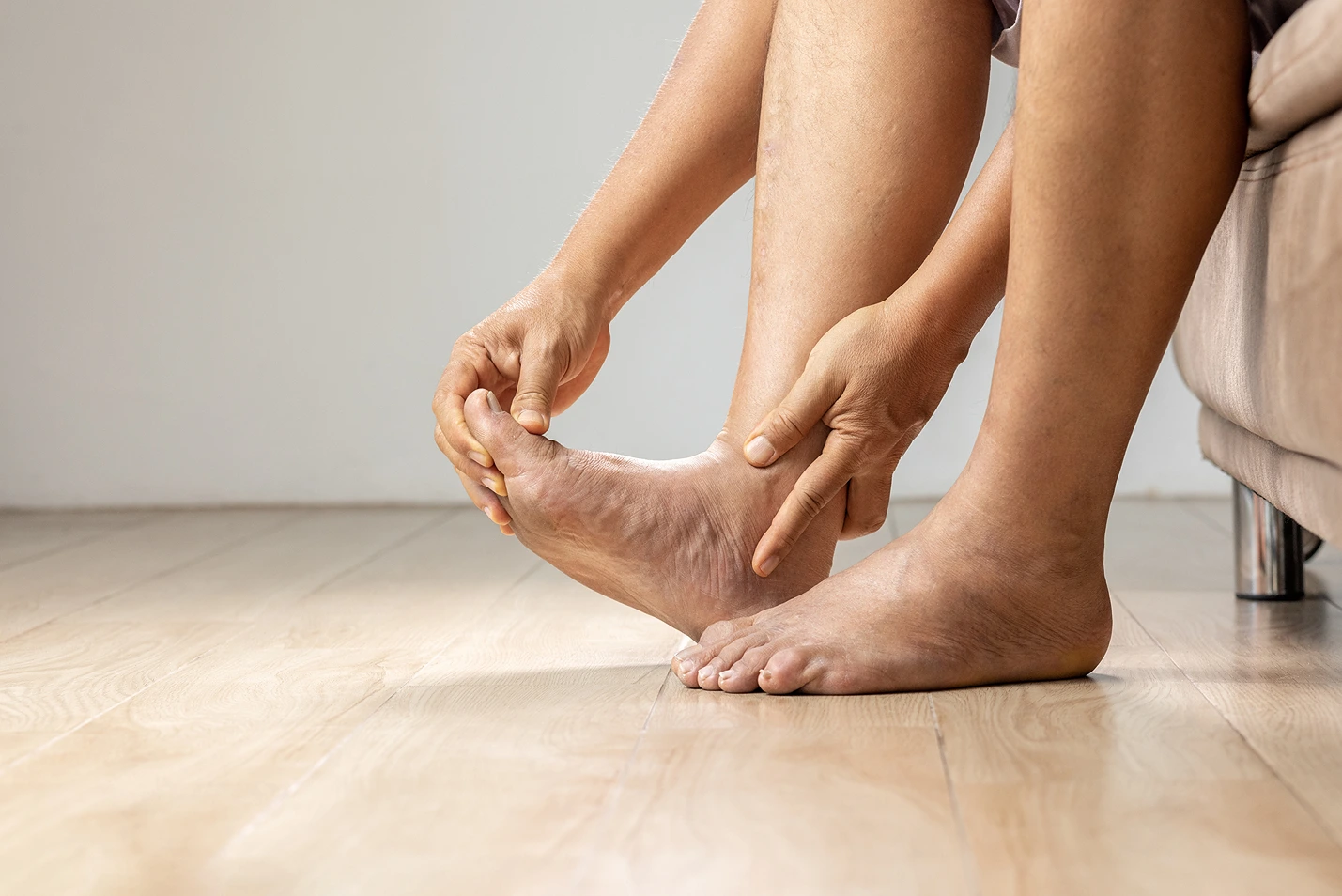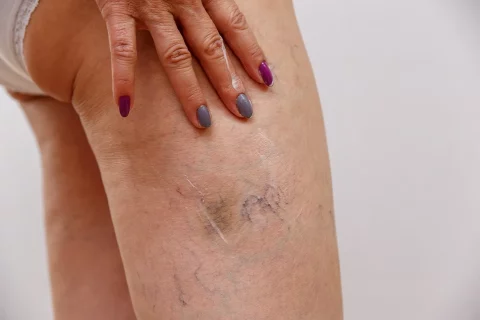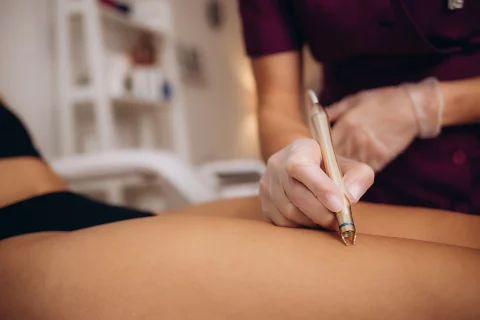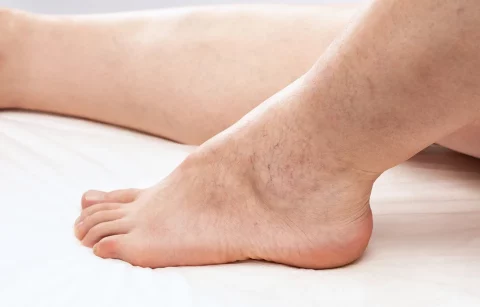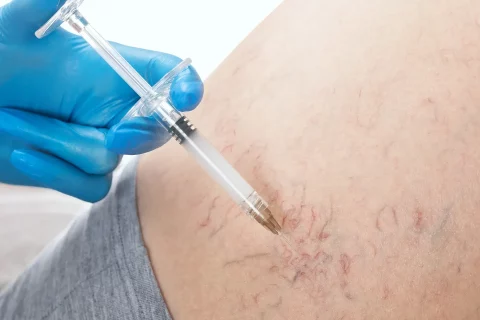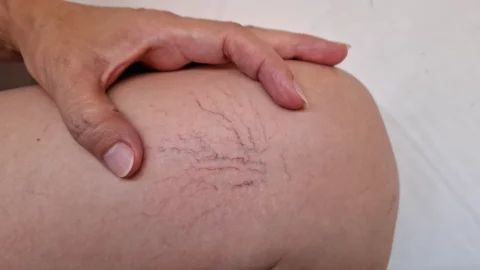How Spider Veins May Indicate Underlying Venous Insufficiency Leading to Ankle Swelling
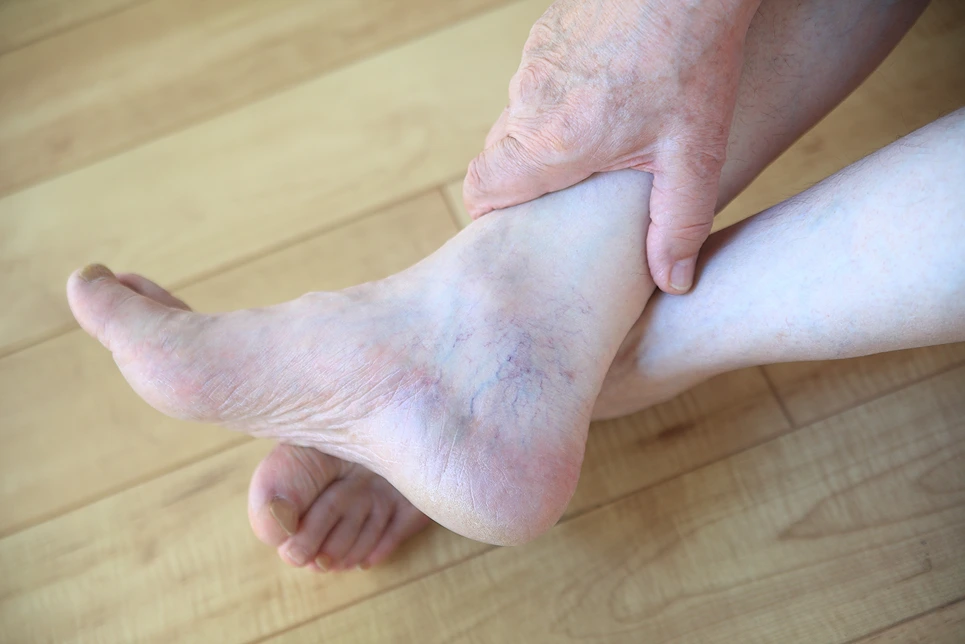
Spider veins don’t directly cause swollen ankles. But they can be an early sign that a problem with your leg veins is causing fluid buildup and swelling in your ankles.
While small and seemingly harmless at first glance, spider veins may provide a valuable early warning sign. Their presence could unveil a deeper root cause behind nagging symptoms like swollen ankles.
Rather than overlook these subtle clues, savvy health detectives dig deeper, tracing the threads back to their source. A skilled vein specialist guides the way, diagnosing and treating the underlying condition.
With timely intervention, those spider veins glittering under the skin transform from pesky annoyances into illuminating guides, lighting the path to improved leg health and reduced swelling. The journey begins with a simple question – do spider veins cause swollen ankles?
Let’s connect the dots.
Living with unwanted veins is a thing of the past, when you can simply schedule a free consultation with Vein Center Doctor and find your ideal solution today.
What are Spider Veins?
Spider veins, also called telangiectasias, are tiny blood vessels that appear in a web-like shape on the surface of the skin. They most commonly develop on the legs and feet but can also occur on the face.
Spider veins are caused by a backup of blood, which causes the veins to stretch and twist. They may appear blue, red, or purple and are typically very small, ranging from 1mm to several millimeters in diameter.
While unsightly, spider veins are usually not a serious medical concern. However, they can sometimes indicate venous insufficiency or other underlying conditions.
Worried those spider veins on your legs could be more than a cosmetic nuisance? Schedule a venous screening at Vein Center Doctor today.
Common Locations of Spider Veins
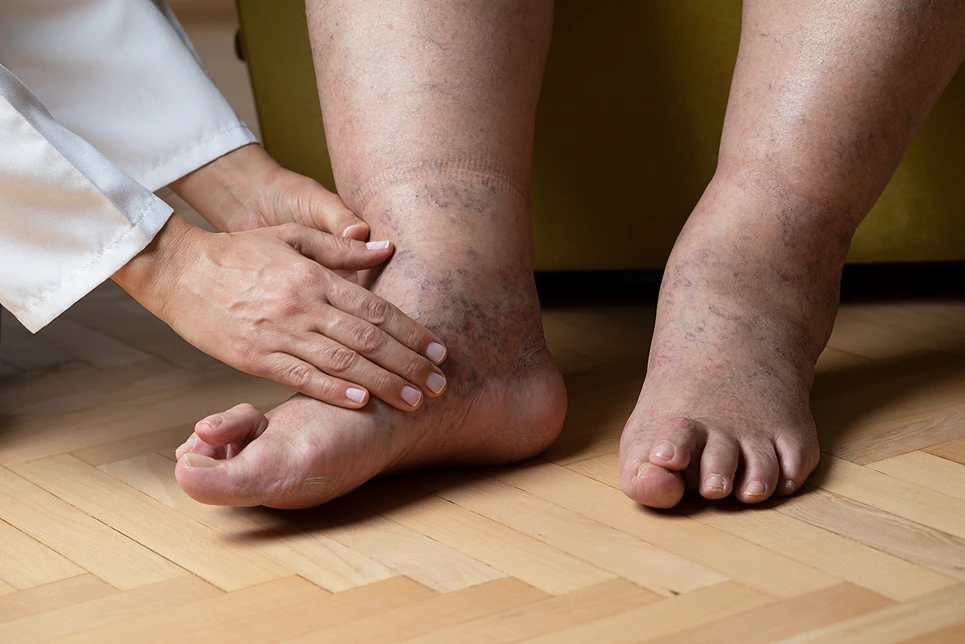
The legs are the most common site for spider veins, especially around the thighs, calves, and ankles. They frequently develop on the inside of the leg, but can appear anywhere below the waist.
Spider veins may also emerge on the face, especially around the nose and cheeks. Facial spider veins occur from sun damage, aging, and rosacea. Spider veins during pregnancy are also common due to increased blood volume and pressure.
Causes of Spider Veins
There are several factors that can contribute to the development of spider veins:
| Genetics | A family history increases the likelihood of developing spider veins due to inherited weak vein valves. |
| Age | Spider veins are more common with age as veins lose elasticity, particularly prevalent among those in their 30s-50s. |
| Hormones | Fluctuations in estrogen during puberty, pregnancy, and menopause increase risk; use of birth control pills also raises susceptibility. |
| Sun Exposure | Years of UV damage can lead to the development of spider veins on the face and legs. |
| Weight | Excess weight puts pressure on the veins in the legs, which can contribute to spider veins. |
| Lifestyle | Prolonged sitting or standing can cause blood pooling in the veins; lack of physical activity also increases risk. |
The Connection Between Spider Veins and Swollen Ankles: Venous Insufficiency
Venous insufficiency is a condition where the valves inside the leg veins aren’t working effectively, usually due to prior blood clots, vein inflammation, or inherited valve defects. Faulty valves allow blood to flow backward and pool in the veins of the legs.
This results in increased venous pressure in the legs. Over time, symptoms like varicose veins, ankle swelling, skin changes, and leg pain can develop as increased blood volume leaks into surrounding tissues.
How Venous Insufficiency Causes Swollen Ankles
When the venous valves don’t close properly, gravity causes blood to accumulate around the ankles and feet. This blood and fluid buildup results in swelling, also called edema.
Edema from venous insufficiency often starts as mild swelling towards the end of the day and improves with rest and leg elevation. As the condition worsens, swelling may become severe and constant.
Additional fluid buildup in the leg tissues strains the walls of the blood vessels, leading to enlarged and twisted varicose veins. Varicose veins may also contribute to ankle swelling.
Role of Spider Veins
Spider veins can be one of the first noticeable signs of venous insufficiency. They indicate increased venous pressure and damage to the valves and veins.
While spider veins themselves don’t directly cause fluid accumulation, their presence can alert a doctor to look for underlying venous insufficiency. Catching venous insufficiency early is key to preventing progression of swelling and future leg complications.
Catch small spider veins before they progress – call Vein Center Doctor today to schedule an evaluation.
Symptoms of Venous Insufficiency
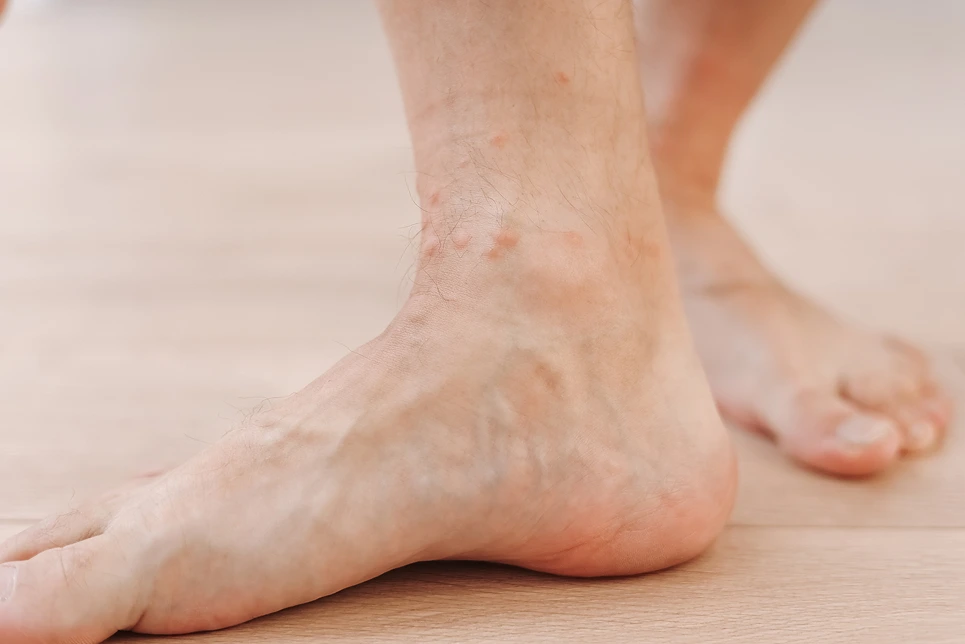
In addition to swollen ankles and spider veins, other symptoms of venous insufficiency may include:
- Leg Pain, Achiness, Heaviness: These symptoms are common and often worsen at the end of the day due to prolonged standing or sitting, which increases venous pressure in the legs
- Leg Cramping and Throbbing: Painful cramps or throbbing sensations can occur, particularly during physical activity or at night
- Itching and Tingling Skin: These sensations are frequently reported in patients with CVI, often due to skin changes associated with increased venous pressure
- Leg Discoloration or Inflammation: Skin changes, including discoloration (often reddish-brown) and inflammation, can occur as a result of chronic venous hypertension
- Skin Ulcers: In severe cases, skin ulcers near the ankles can develop due to poor circulation and increased pressure in the veins
- Blood Clots: While not a direct symptom of CVI itself, a history of blood clots can lead to venous insufficiency, and patients may experience complications related to this condition
Swelling typically begins around the ankles and feet but can spread up the leg if venous insufficiency is left untreated. Seeking medical care for persistent or severe swelling is important to address the underlying cause and prevent complications.
When to Seek Medical Attention
In many cases, mild spider veins do not require treatment. However, it’s important to be evaluated by a vein specialist if you notice any of the following:
- Swelling that persists throughout the day or is unilateral (one leg only)
- Extreme swelling that leaves an indentation when pressed with a finger
- Swelling accompanied by pain, redness, warmth or leg discoloration
- Sores, bleeding, or ulceration near swollen ankles
- Varicose veins that cause discomfort or limit activity
- Fever, red streaks, or pus/discharge from swollen legs
These signs can indicate an infection, blood clot, or progression to severe venous insufficiency. Prompt medical treatment is key to preventing the development of chronic venous disease.
Early diagnosis also allows for effective treatment to improve symptoms and underlying vein valve problems. A vein specialist can check for venous insufficiency and offer the best therapies.
Can You Prevent Spider Veins and Swollen Ankles?
While spider veins can be hard to prevent entirely, especially when hereditary risks are present, the following measures can help reduce the chances of developing them and related ankle swelling:
- Maintain a healthy weight to avoid pressure on leg veins.
- Do regular low-impact exercise such as walking, swimming, or biking to improve circulation.
- Avoid long periods of standing or sitting. Take breaks to move and elevate legs above heart level.
- Wear compression stockings to support vein walls.
- Avoid high heels regularly which can worsen swelling.
- Eat a diet rich in circulation-boosting nutrients like flavonoids.
- Limit sun exposure and use broad-spectrum SPF 30+ sunscreen to protect leg skin.
- During pregnancy, sleep on your left side to improve blood flow.
Know your family history and get screened for high risk for vein disease.
Treating spider veins and venous insufficiency as early as possible is the best way to prevent worsening, reduce swelling, and improve long-term leg health. Always see a doctor for symptomatic vein issues.
Conclusion
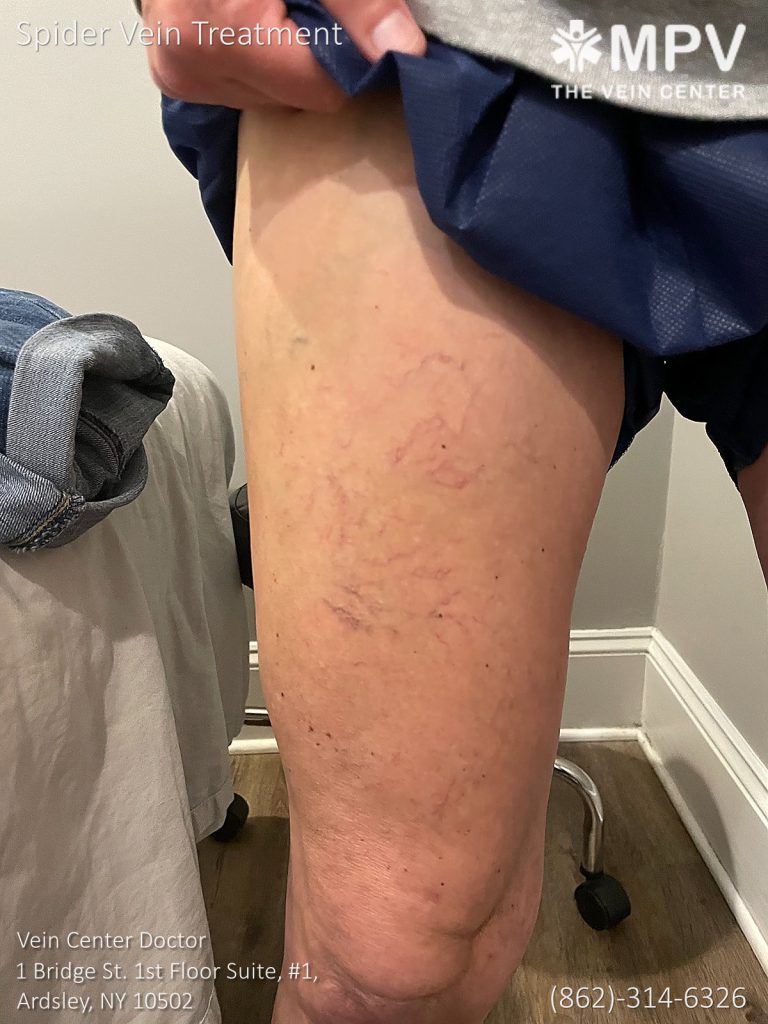
While spider veins themselves do not directly cause swollen ankles, they may be a subtle sign of underlying chronic venous insufficiency. Faulty leg vein valves lead to blood pooling in the ankles and feet, resulting in fluid accumulation and swelling.
Along with spider veins, symptoms like leg heaviness, achiness, and varicose veins can also indicate venous insufficiency. Addressing this condition early provides the best chance to reduce swelling and other complications.
Consulting a vein specialist promptly if you notice persistent spider veins or ankle swelling allows for diagnosis of any vein valve problems. Effective treatments tailored to your specific condition can then help alleviate swelling and discomfort while improving long-term leg wellbeing. With proper medical care, it’s possible to both diminish the appearance of spider veins and prevent future issues like chronic swelling.
At Vein Center Doctor, our team of expert vein specialists provides cutting-edge diagnosis and treatment for spider veins, varicose veins, and venous insufficiency. We offer advanced minimally invasive procedures such as sclerotherapy, Venaseal, and venous compression therapy to improve vein health and reduce uncomfortable symptoms like ankle swelling.
[Don’t wait for advanced swelling or complications – contact Vein Center Doctor now for customized spider and varicose vein care]
Dr. Sood at Vein Center Doctor is always happy to offer free consultations to anyone looking to understand their vein issues. Don’t spend another day wondering how to make those visible veins go away. Call us at 862-227-1143 today!

